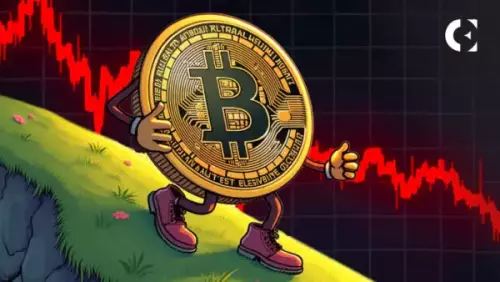 |
|
 |
|
 |
|
 |
|
 |
|
 |
|
 |
|
 |
|
 |
|
 |
|
 |
|
 |
|
 |
|
 |
|
 |
|
Cryptocurrency News Articles
XRP Ledger Is All About Efficiency, but There Is More to It Than That
Dec 13, 2024 at 04:48 pm
Every transaction, including those that involve Ripple's upcoming stablecoin RLUSD, incurs a small fee in XRP. This fee is not put back into the system; it is permanently removed from circulation.

The XRP Ledger is designed to be efficient, and one way it achieves this is through a mechanism called XRP burning. Every transaction on the network, including those involving Ripple's upcoming stablecoin RLUSD, incurs a small fee in XRP. This fee is not put back into the system but is permanently removed from circulation.
While the process is minor - usually only around 0.00001 XRP - it has broader implications for the network's design and stability. The system is not rigid, however.
"As a general rule, fees stay low, but during periods of high network activity, they can rise. The transactions compete with each other for priority, with higher fees moving through faster," Schwartz explained.
"This keeps the network safe from spam and congestion while ensuring that it can still be used for genuine purposes."
The fee levels are set by validators, so they can change without affecting the network's security, according to Schwartz.
"The minimum is set by consensus. But if there's a burst of transaction load beyond what the network can clear, transactions are prioritized based on fees," he said.
RLUSD, Ripple's stablecoin, operates under the same set of rules. Its transactions are a separate asset, but they still need XRP fees to be processed on the ledger. This ensures that the burning mechanism is not bypassed, no matter what asset is being traded.
As more people start using RLUSD, its transaction volume could lead to some noticeable, but still small, reductions in XRP's total supply.
However, an analysis of global systems like SWIFT, Visa and Mastercard - with over a billion transactions per day - shows that this scale of activity would burn only around 0.0075% of XRP's supply annually.
Disclaimer:info@kdj.com
The information provided is not trading advice. kdj.com does not assume any responsibility for any investments made based on the information provided in this article. Cryptocurrencies are highly volatile and it is highly recommended that you invest with caution after thorough research!
If you believe that the content used on this website infringes your copyright, please contact us immediately (info@kdj.com) and we will delete it promptly.
-

-

- One-Stop Shop Dreams: How Mergers are Shaping the Hobbyist Landscape
- Nov 07, 2025 at 12:04 am
- The merger of CoinStampSupplies.com and CollectorsSupplyHouse.com exemplifies a growing trend: creating one-stop shops for hobbyists. This blog explores the benefits and implications of such consolidations.
-

-

-

-

-

-

-































































